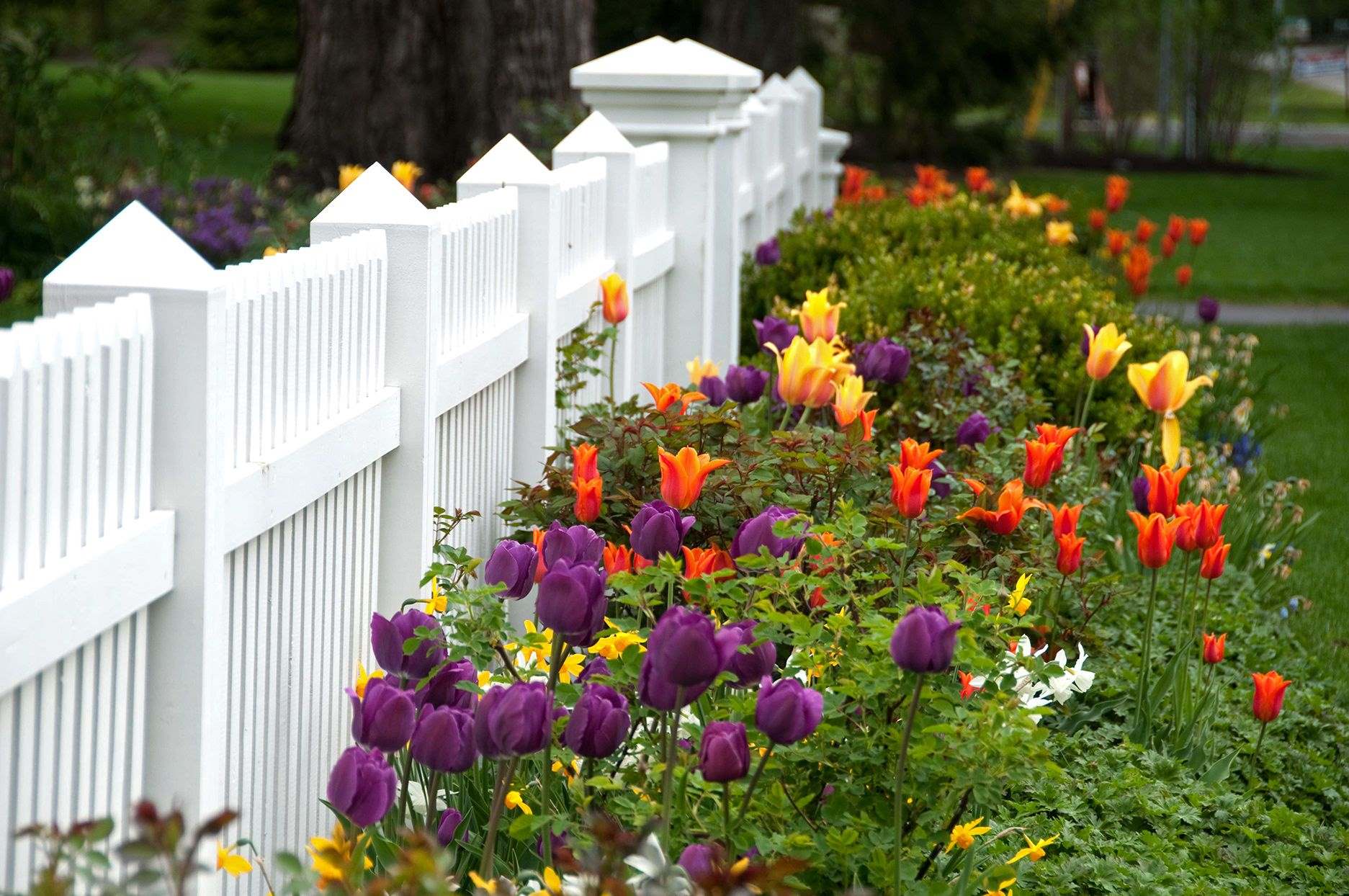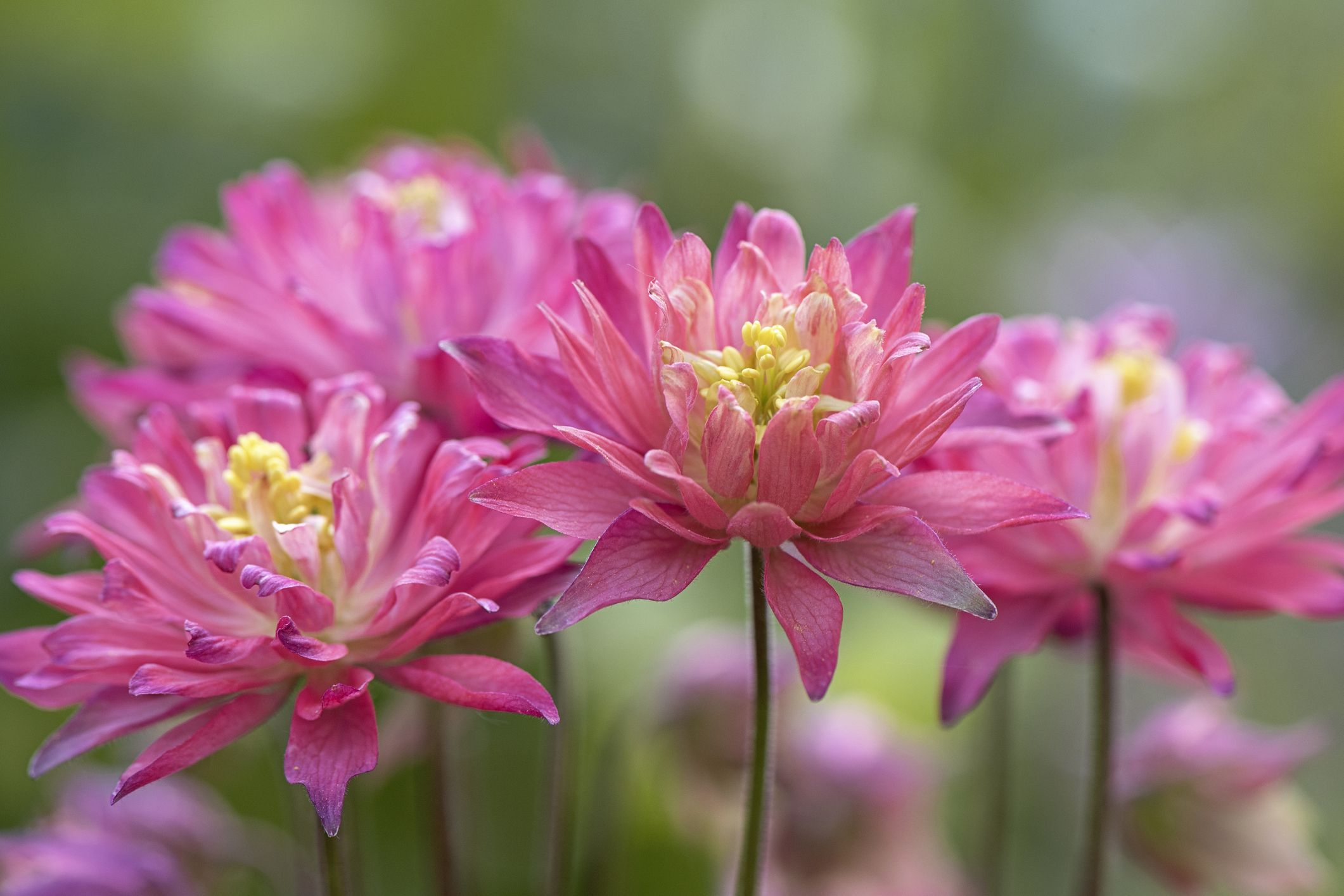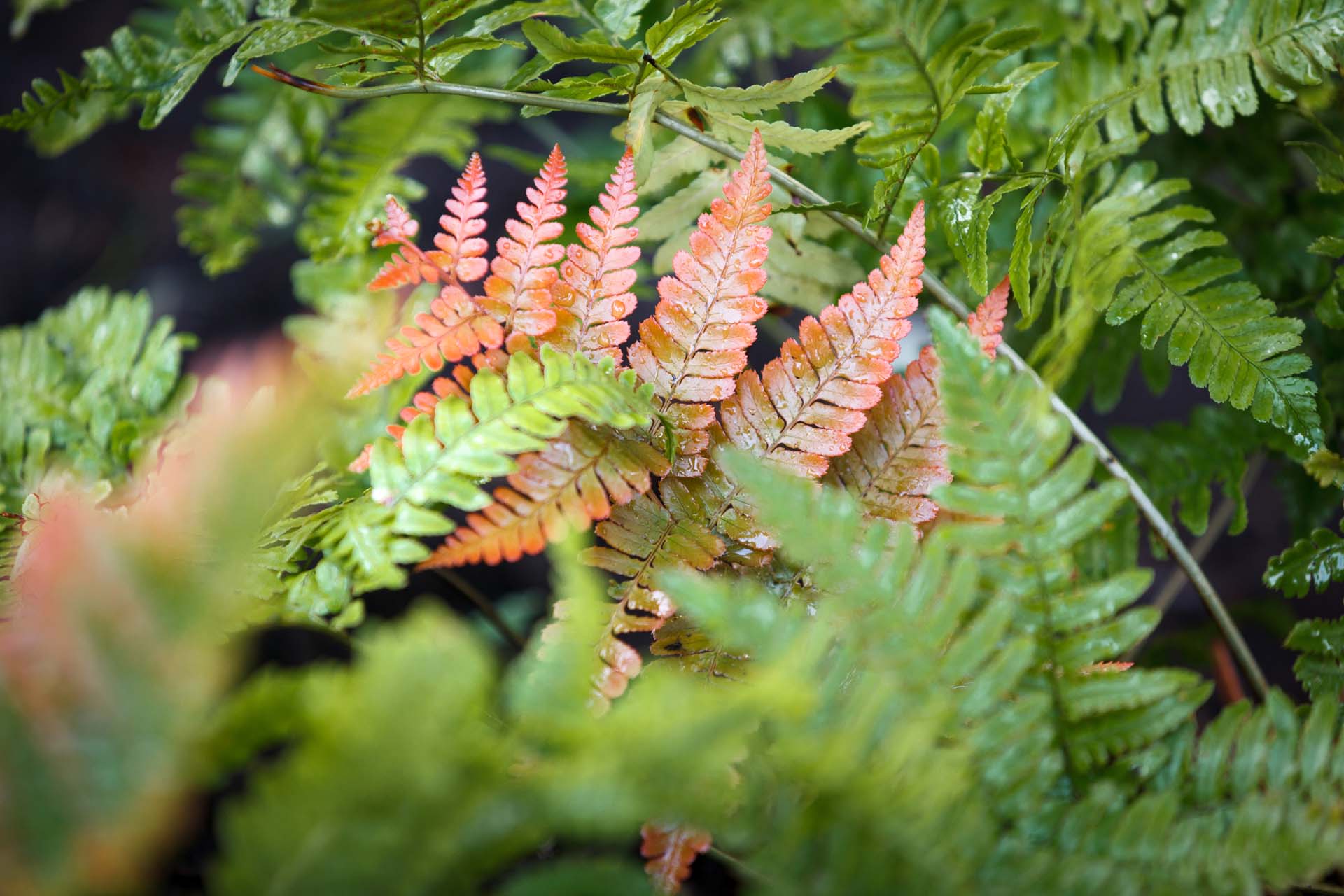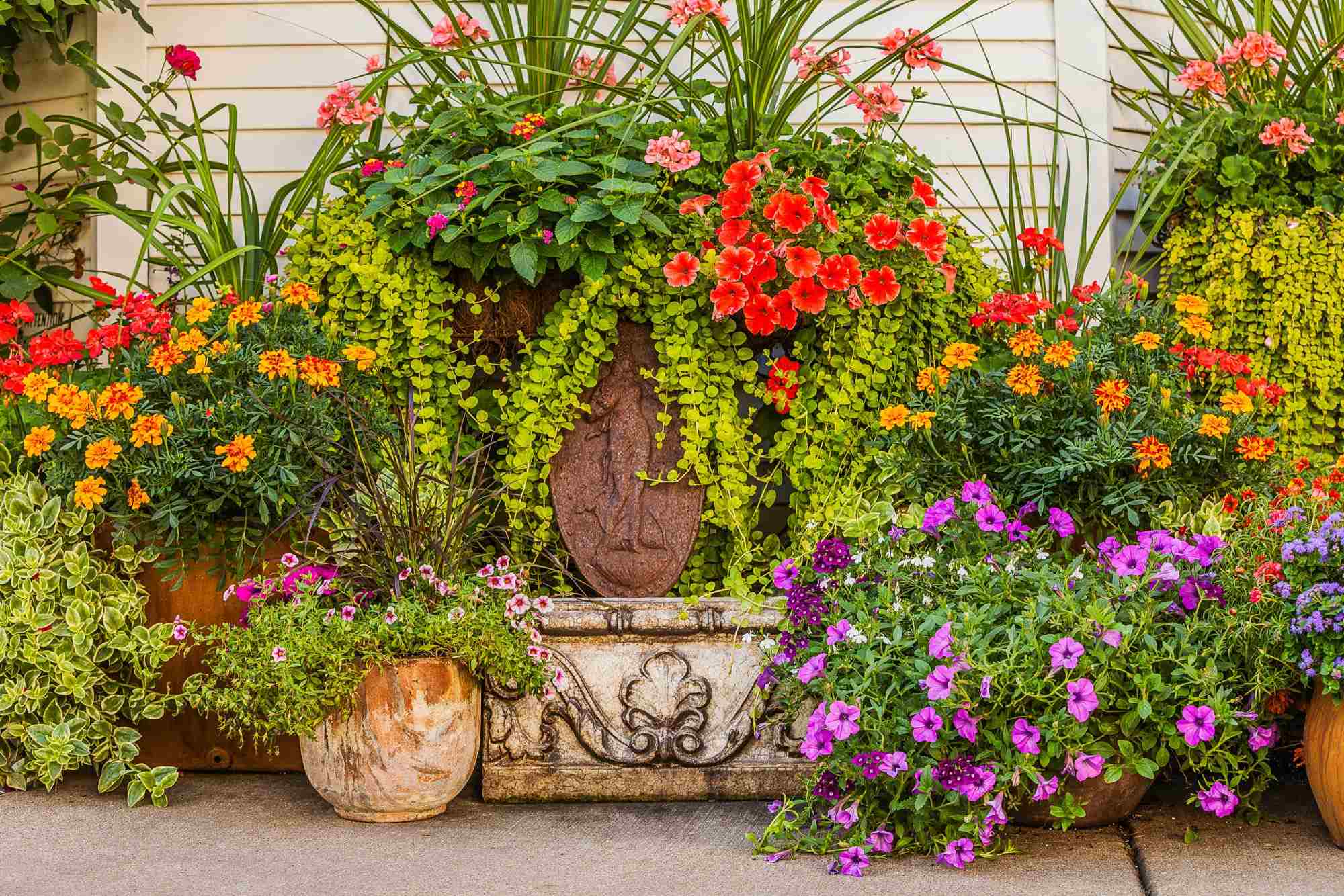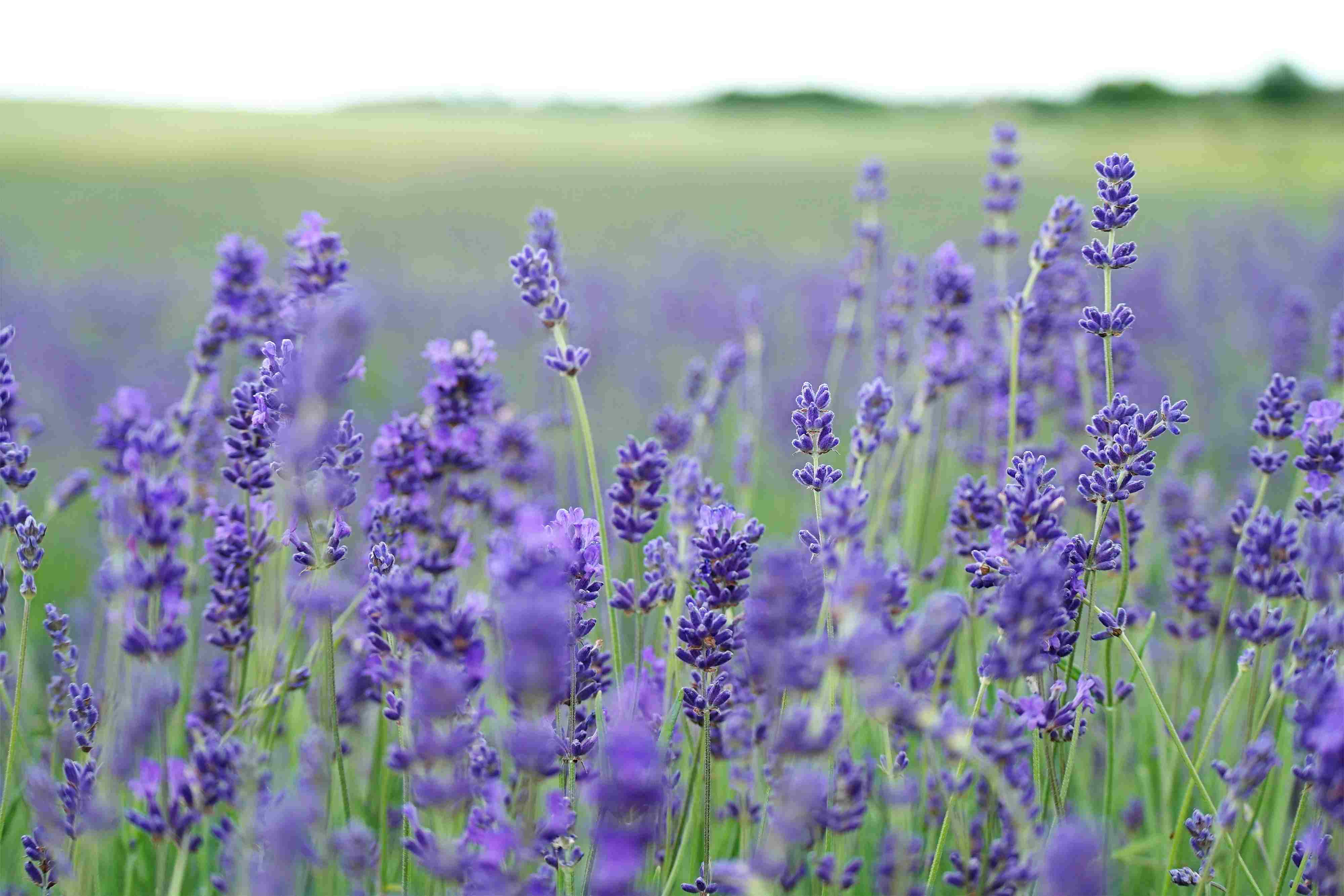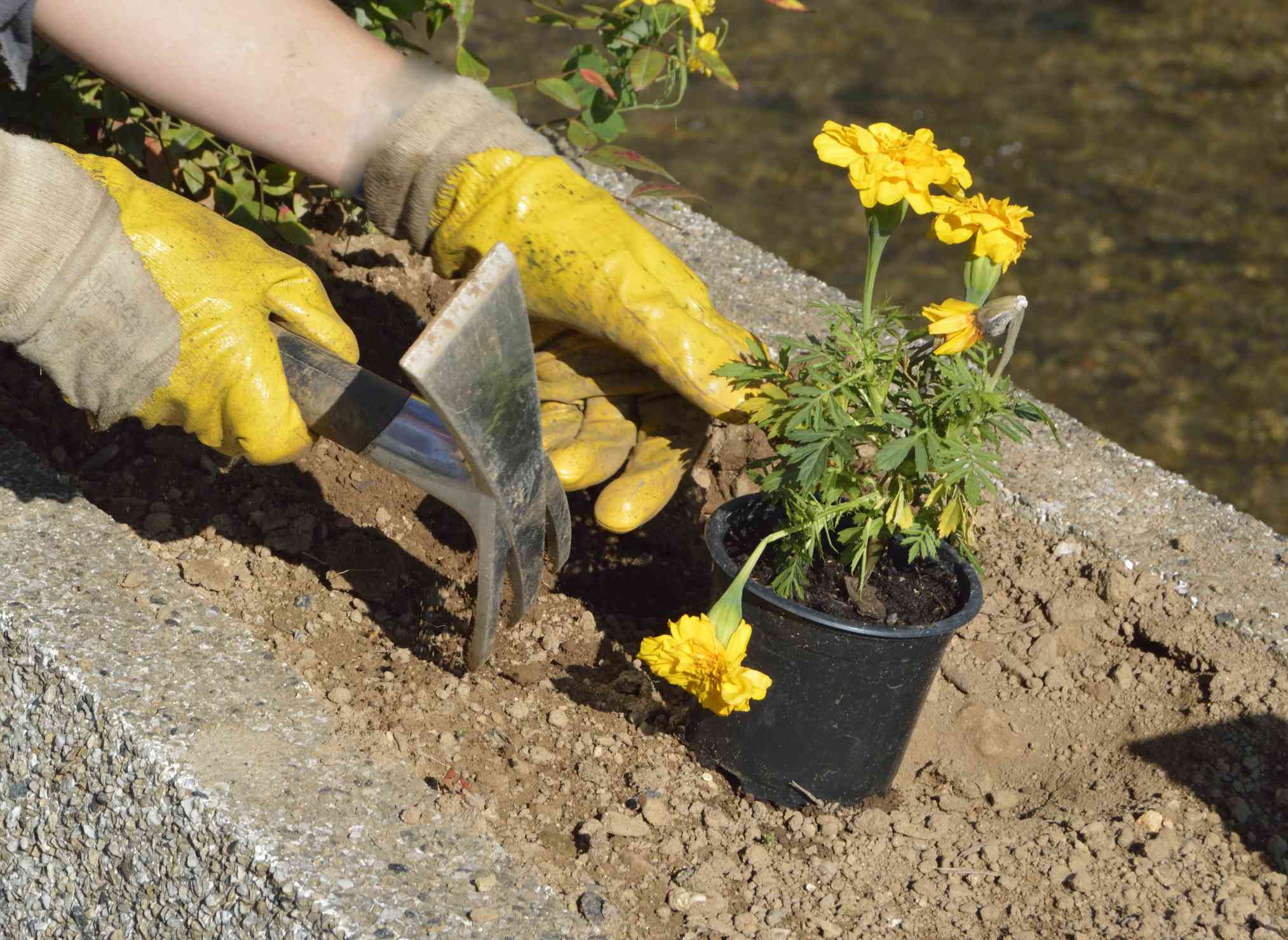Home>Types of Gardening>Ornamental Gardening>What Is A Perennial Plant


Ornamental Gardening
What Is A Perennial Plant
Modified: January 22, 2024
Discover the beauty and longevity of perennials plants with our comprehensive guide. Explore the world of ornamental gardening and bring your landscape to life.
(Many of the links in this article redirect to a specific reviewed product. Your purchase of these products through affiliate links helps to generate commission for Chicagolandgardening.com, at no extra cost. Learn more)
Table of Contents
- Introduction
- Definition of Perennial Plants
- Characteristics of Perennial Plants
- Types of Perennial Plants
- Life Cycle of Perennial Plants
- Benefits of Growing Perennials
- Popular Perennial Flowers
- Popular Perennial Herbs
- Factors to Consider When Growing Perennials
- Tips for Maintaining Perennial Plants
- Conclusion
Introduction
Welcome to the world of ornamental gardening, where beauty flourishes and nature adds a touch of enchantment to our surroundings. If you’ve ever strolled through a dazzling garden, mesmerized by the vibrant colors and fragrant aromas, you’ve likely encountered a wide variety of perennial plants.
Perennial plants play a crucial role in ornamental gardening, providing year-round beauty and creating a foundation for stunning landscapes. Whether you’re a seasoned gardener or just starting on your green thumbs’ journey, understanding the world of perennials is essential.
But what exactly are perennial plants? Why are they so beloved by gardeners around the world? In this article, we’ll delve into the world of perennial plants, exploring their unique characteristics, their various types, and the reasons why they hold a special place in the hearts of ornamental garden enthusiasts.
Whether you’re looking to spruce up your backyard, create a vibrant flowerbed, or add a touch of greenery to your balcony, perennials are sure to be a key ingredient in your gardening endeavors. Let’s dig in and unearth the wonders of perennial plants!
Definition of Perennial Plants
Before we delve into the world of perennial plants, let’s define what exactly they are. Perennial plants are a category of plants that live for more than two years. Unlike annuals, which complete their life cycle within one growing season, perennials have the remarkable ability to survive year after year.
One of the defining features of perennial plants is their dormant period during winter. While their leaves and stems may die back, perennials have underground structures like bulbs, rhizomes, or taproots that store vital nutrients and energy. These stored resources enable them to re-emerge with vigor when the weather becomes favorable again.
Perennial plants can be found in various shapes, sizes, and forms, ranging from delicate flowers to lush foliage. They can be deciduous, shedding their leaves during the winter, or evergreen, retaining their foliage year-round. This diversity allows for endless possibilities when it comes to designing a stunning and dynamic garden.
The lifespan of perennial plants varies. Some perennials have a relatively short life span, while others can live for decades, providing a consistent source of beauty and delight. Regardless of their longevity, perennials play a crucial role in adding depth and continuity to any garden or landscape.
Now that we have a clear understanding of what perennial plants are, let’s dive deeper into their unique characteristics and explore their world of wonders.
Characteristics of Perennial Plants
Perennial plants possess several key characteristics that set them apart from other types of plants. Understanding these characteristics is essential for successful cultivation and maintenance. Here are some notable features of perennial plants:
- Longevity: Perennials have a longer lifespan compared to annuals and biennials. While other plants complete their life cycle within one or two years, perennials continue to thrive for many years, delighting gardeners with their enduring beauty.
- Dormancy: Perennials undergo a period of dormancy during colder months. Above-ground growth may die back, but the plant remains alive, waiting for the return of warmer temperatures to resume its growth cycle.
- Root Structures: Perennials often have well-developed root systems that help them survive harsh conditions. These root structures, such as bulbs, rhizomes, or taproots, store nutrients and energy, ensuring the plant’s ability to regrow each season.
- Adaptability: Perennials have evolved to adapt to various environmental conditions. They can tolerate different levels of sunlight, soil types, and moisture levels, making them versatile choices for gardens in diverse climates.
- Growth Habit: Perennials can have different growth habits, including clumping or spreading. Clumping perennials grow in dense clusters, creating focal points or borders in gardens. Spreading perennials, on the other hand, send out runners or rhizomes, gradually expanding their presence in a garden.
- Seasonal Beauty: Perennials offer dynamic displays of beauty throughout the seasons. They produce flowers, foliage, or both, with blooming periods that can range from a few weeks to several months. This diversity ensures that there’s always something captivating happening in the garden.
These characteristics make perennial plants valuable assets in ornamental gardening. Their resilience, adaptability, and long lifespan provide an opportunity to create stunning landscapes that evolve and transform year after year.
Types of Perennial Plants
Perennial plants encompass a vast array of species, each with its own unique characteristics and beauty. gardeners have a wide variety of options to choose from when it comes to adding perennials to their landscapes. Here are some common types of perennial plants:
- Flowering Perennials: These perennials are known for their stunning blooms. From vibrant tulips to delicate roses, flowering perennials add bursts of color and fragrance to gardens. Popular examples include coneflowers, daylilies, and daisies.
- Grasses and Ornamental Grasses: Grasses are versatile perennials that bring texture and movement to gardens. From tall, graceful feather reed grasses to low-growing blue fescues, there are options to suit every garden style. Ornamental grasses also offer beautiful seed heads that add interest during the winter months.
- Ferns: Ferns are elegant perennials that thrive in shaded areas. With their delicate fronds and feathery foliage, ferns create a lush and tranquil atmosphere. Examples include Maidenhair ferns, Ostrich ferns, and Boston ferns.
- Groundcovers: Groundcovers are low-growing perennials that spread to cover the soil. They are excellent choices for filling in empty spaces, preventing erosion, and suppressing weeds. Some popular groundcovers include creeping thyme, creeping phlox, and ajuga.
- Herbaceous Perennials: Herbaceous perennials are non-woody plants that die back to the ground in winter. They often have beautiful foliage and can include a wide variety of plants, such as hostas, peonies, and asters. Herbaceous perennials provide a stunning palette of colors and textures throughout the growing season.
- Evergreen Perennials: Evergreen perennials retain their foliage year-round, adding structure and color to the garden throughout the seasons. Popular examples include holly, heather, and certain varieties of sedum. These perennials provide visual interest even in the depths of winter.
These are just a few examples of the types of perennial plants available to gardeners. Each category offers its own unique beauty and benefits, allowing for endless possibilities when designing and creating your ideal garden.
Life Cycle of Perennial Plants
The life cycle of perennial plants is a fascinating process that involves several stages, each contributing to their long-term survival and beauty. Understanding this life cycle is crucial for effectively cultivating and maintaining perennials in your garden.
The life cycle of a perennial plant can be broken down into the following stages:
- Germination: Perennial plants begin their life cycle as seeds. These seeds must undergo specific conditions, such as proper temperature and moisture, to germinate and sprout.
- Seedling Stage: After germination, the seedlings emerge from the soil. During this stage, they develop their first set of true leaves and begin to establish their root system. The seedlings require care and protection as they grow and become stronger.
- Vegetative Growth: Once the seedlings are established, they enter a phase of vegetative growth. During this stage, the focus is on developing a strong root system and foliage. The perennials grow in size and may produce more leaves and branches while preparing themselves for eventual flowering.
- Flowering Stage: Depending on the specific variety of perennial, the flowering stage can occur in the first year or subsequent years. The plant directs energy towards producing and displaying beautiful blooms, attracting pollinators to aid in the reproduction process.
- Seed Production: After the flowers have bloomed and been pollinated, the perennials will enter the seed production stage. The flowers will start to produce seeds, which will be dispersed through various means, such as wind, animals, or water.
- Dormancy: As the growing season comes to an end and the weather turns colder, perennial plants enter a period of dormancy. Above-ground growth may die back, while the plant’s energy shifts towards the roots and other storage structures. It enables the perennials to survive the harsh conditions of winter.
- Rejuvenation and Repeat: As winter fades and spring arrives, perennials emerge from dormancy and begin the cycle anew. The stored energy fuels the growth of new shoots, leaves, and flowers. Perennials have the remarkable ability to repeat this life cycle for many years, bringing beauty and joy to gardens season after season.
Understanding the life cycle of perennial plants allows gardeners to anticipate and support each stage of growth. By providing the necessary care and attention, you can help perennials thrive and add long-lasting beauty to your garden.
Benefits of Growing Perennials
Growing perennials in your garden offers a multitude of benefits that make them a popular choice among gardeners of all levels of expertise. From their long lifespan to their ability to add year-round beauty, perennials bring many advantages to your outdoor space. Here are some of the key benefits of growing perennials:
- Low Maintenance: Perennials are known for their low maintenance requirements. Once established, they generally require less care and attention compared to annuals and biennials. This makes them an excellent choice for busy gardeners or those who prefer a more relaxed approach to gardening.
- Longevity: One of the most significant advantages of perennials is their longevity. Unlike annual plants that need to be replanted every year, perennials can survive for multiple years with proper care. This means you can enjoy their beauty and reap the rewards of your gardening efforts for years to come.
- Cost-Effective: While perennials may have a higher upfront cost compared to annuals, they can save you money in the long run. Since perennials come back year after year, you won’t need to purchase new plants annually. This can result in significant savings on your gardening expenses over time.
- Environmental Benefits: Perennials offer environmental benefits by helping to preserve soil health and prevent erosion. Their well-developed root systems hold the soil in place, reducing the risk of runoff and maintaining the integrity of the landscape. Additionally, certain perennial plants serve as habitats and food sources for beneficial insects and pollinators, contributing to the biodiversity of your garden.
- Continuous Beauty: With their ability to bloom year after year, perennials provide continuous beauty and interest in the garden. Unlike annuals that may have a limited blooming period, perennials offer blossoms that emerge and fade throughout the seasons. This ensures there is always something visually appealing happening in your garden, delighting both you and any visitors.
- Versatility: Perennials come in a wide range of colors, shapes, and sizes, providing endless possibilities for garden design. Whether you want a vibrant flowerbed, a serene woodland garden, or a low-maintenance drought-tolerant landscape, there are perennials that can fulfill your vision. Their versatility allows you to create a garden that reflects your personal style and preferences.
By incorporating perennials into your garden, you can enjoy these benefits and create a stunning and vibrant outdoor space that will bring you joy for years to come.
Popular Perennial Flowers
Perennial flowers are beloved for their stunning blooms, enduring beauty, and ability to add color and vibrancy to any garden. With a wide variety of options available, choosing the right perennial flowers can be an exciting endeavor. Here are some popular perennial flowers that are adored by gardeners around the world:
- Roses (Rosa spp.): Known as the “queen of flowers,” roses are classic perennials that symbolize love and beauty. With their exquisite blossoms and enchanting fragrances, roses make a striking addition to any garden.
- Coneflowers (Echinacea spp.): Coneflowers are native North American perennials with daisy-like flowers in vibrant colors like pink, purple, and white. They are not only stunning but also attract pollinators, making them an excellent choice for wildlife-friendly gardens.
- Daylilies (Hemerocallis spp.): Daylilies are popular perennials with colorful blooms that last only one day but are quickly replaced by new ones. They come in a wide range of hues and can thrive in various climates and soil conditions.
- Black-eyed Susans (Rudbeckia spp.): Black-eyed Susans are hardy and cheerful perennials that brighten any garden with their golden yellow petals and dark centers. They are drought-tolerant and attract butterflies, making them a delightful addition to pollinator gardens.
- Peonies (Paeonia spp.): Peonies are prized for their large, showy flowers and exquisite fragrance. These long-lived perennials come in a variety of colors and can create a stunning focal point in any garden.
- Lavender (Lavandula spp.): Lavender is not only a beautiful perennial with its aromatic purple flowers but also has a soothing fragrance and numerous medicinal and culinary uses. It thrives in sunny and well-drained locations.
- Irises (Iris spp.): Irises are elegant perennials that come in a wide range of colors and flower forms. They add a touch of grace and sophistication to gardens, with their delicate petals and distinctive sword-like leaves.
- Salvia (Salvia spp.): Salvia is a versatile perennial that offers a wide range of colors and sizes. With their vibrant flowers and ability to attract hummingbirds and butterflies, salvias are a popular choice for adding pops of color to garden borders.
These are just a few examples of the many popular perennial flowers available to gardeners. By choosing the ones that suit your personal style and growing conditions, you can create a beautiful and dynamic flower garden that blooms year after year.
Popular Perennial Herbs
Perennial herbs are a delightful addition to any garden, providing a continuous supply of fresh flavors, captivating aromas, and medicinal properties year after year. Whether you’re an avid cook, a herbalist, or simply appreciate the beauty and fragrance of herbs, incorporating perennial herbs in your garden is a great idea. Here are some popular perennial herbs that are treasured by gardeners:
- Lavender (Lavandula spp.): Lavender is not only known for its ornamental beauty but also for its calming fragrance and therapeutic properties. Its aromatic flowers and leaves can be used in cooking, potpourri, herbal teas, and cosmetics.
- Chives (Allium schoenoprasum): Chives are versatile herbs that add a mild onion flavor to various dishes. They are easy to grow and produce clumps of slender, hollow leaves that can be used fresh or dried.
- Mint (Mentha spp.): Mint is a refreshing perennial herb that comes in several varieties, such as spearmint and peppermint. Known for its cooling and invigorating scent, mint is commonly used in teas, cocktails, desserts, and savory dishes.
- Thyme (Thymus spp.): Thyme is a popular perennial herb with aromatic leaves that add a savory note to many dishes. With its small, delicate flowers and evergreen foliage, thyme adds both beauty and flavor to the garden.
- Rosemary (Rosmarinus officinalis): Rosemary is a woody perennial herb renowned for its pine-like fragrance and needle-like leaves. It is a favorite herb in Mediterranean cuisine and pairs well with roasted meats, potatoes, and bread.
- Sage (Salvia officinalis): Sage is a perennial herb with distinctive, velvety gray-green leaves and a pungent flavor. It is commonly used in stuffing, meat dishes, and as a medicinal herb for its soothing properties.
- Oregano (Origanum spp.): Oregano is a flavorful perennial herb commonly used in Italian and Mediterranean cuisines. Its aromatic leaves enhance the taste of various dishes, including pizzas, pasta sauces, and roasted vegetables.
- Thyme (Thymus spp.): Thyme is a popular perennial herb with aromatic leaves that add a savory note to many dishes. With its small, delicate flowers and evergreen foliage, thyme adds both beauty and flavor to the garden.
These perennial herbs are not only valuable for their culinary uses but also for their ability to attract pollinators, their aromatic presence in the garden, and their potential medicinal benefits. By incorporating perennial herbs into your garden, you can enjoy a flavorful and fragrant outdoor space year after year.
Factors to Consider When Growing Perennials
Growing perennial plants can be a rewarding and enjoyable endeavor, but it’s essential to consider certain factors to ensure their success in your garden. By understanding these factors, you can make informed decisions and create an environment conducive to the thriving of your perennial plants. Here are some key factors to consider:
- Climate: Different perennials have varying climate requirements. Some are tolerant of both heat and cold, while others prefer specific temperature ranges. Research the hardiness zone of your region and choose perennials that are well-suited to your climate to ensure their long-term survival.
- Sunlight: Most perennials thrive in full sun, but some prefer partial shade. Take note of the sunlight conditions in your garden, and select perennials accordingly. Proper placement will help ensure that your plants receive the appropriate amount of sun exposure for their optimal growth.
- Soil Type: Perennials have varying soil preferences, such as well-draining soil, clay soil, or acidic soil. Before planting, assess your garden’s soil type and amend it if necessary to create an ideal growing environment for your chosen perennials.
- Watering Needs: Perennial plants have different watering requirements. Some prefer consistently moist soil, while others are more drought-tolerant. It’s important to understand the watering needs of your chosen perennials and provide them with adequate moisture to promote healthy growth.
- Spacing: Consider the mature size of your perennials and their growth habit when planning your garden. Proper spacing between plants allows for good airflow and prevents overcrowding, reducing the risk of diseases and promoting overall plant health.
- Companion Planting: Some perennials benefit from companion planting, where certain plants are grown together due to their mutually beneficial relationships. For example, planting tall perennials near shorter ones can provide shade and shelter, while certain combinations can deter pests or attract beneficial insects.
- Seasonal Interest: Plan for year-round interest by selecting perennials that offer a variety of bloom times, foliage colors, and textures. This ensures that your garden remains visually appealing throughout the seasons, even when specific perennials are not in bloom.
- Maintenance Requirements: Consider the maintenance requirements of each perennial plant, such as deadheading, pruning, or dividing. Some perennials require regular care to promote healthy growth and prevent overgrowth, while others are relatively low maintenance.
By taking these factors into account, you can create a garden that is well-suited to the needs of your chosen perennials, ensuring their longevity and enhancing the overall beauty of your outdoor space.
Tips for Maintaining Perennial Plants
Maintaining perennial plants is essential to ensure their long-term health and beauty. By following these tips, you can keep your perennials thriving and enjoy their vibrant blooms and foliage year after year:
- Watering: Provide your perennials with the appropriate amount of water, taking into consideration their specific watering needs. Water deeply and less frequently to encourage deep root growth, especially during dry spells.
- Fertilizing: Feed your perennials with a balanced organic fertilizer in early spring or as directed by the specific plant’s requirements. This supplies essential nutrients to promote healthy growth and abundant blooms.
- Pruning: Regularly remove dead or faded flowers by deadheading. This helps redirect the plant’s energy towards new growth and encourages prolonged blooming. Prune back any damaged or overgrown foliage to maintain a neat and compact shape.
- Dividing: Some perennials benefit from division every few years to rejuvenate them and prevent overcrowding. Divide the plants in early spring or fall, ensuring each new division has a healthy root system. Replant the divided portions and share extras with fellow gardeners.
- Weeding: Keep your perennial beds free from weeds. Regular weeding prevents competition for water, nutrients, and space, ensuring the optimal growth and health of your perennials. Apply mulch to suppress weed growth and retain moisture in the soil.
- Support: Provide support, such as stakes or trellises, for tall or climbing perennials that may require additional support to prevent them from flopping or breaking under their own weight. This helps maintain an upright form and showcases their blooms effectively.
- Monitoring Pests and Diseases: Regularly inspect your perennials for signs of pests and diseases. Early detection allows for prompt action, minimizing potential damage. Employ organic pest control methods and appropriate treatments to maintain plant health.
- Winter Protection: Prepare your perennials for winter by mulching around their base to insulate the soil and protect the roots. Cut back any dead foliage, but avoid heavy pruning until the spring. Protect vulnerable perennials from harsh weather conditions or provide temporary coverings.
By following these maintenance tips, you can ensure the longevity and beauty of your perennial plants. Remember to observe and respond to the specific needs of each plant, as certain perennials may have unique care requirements.
Conclusion
Ornamental gardening with perennial plants brings a world of beauty, color, and fragrance to our outdoor spaces. From the vibrant blooms of perennial flowers to the flavorful herbs that enhance our culinary experiences, these plants have a special place in gardening enthusiasts’ hearts.
Throughout this article, we have explored the definition and characteristics of perennial plants, delved into their life cycle, and discovered the benefits they offer to gardeners. We’ve also explored popular perennial flowers and herbs, providing a glimpse into the incredible variety that exists within these categories.
As you embark on your own ornamental gardening journey with perennials, it’s important to consider factors such as climate, sunlight, soil type, and maintenance requirements. By understanding these key elements and providing the appropriate care, you can create a flourishing garden that brings joy and beauty year after year.
Remember to choose perennials that are suitable for your climate and growing conditions, and select a variety of plants that bloom at different times to maintain interest throughout the seasons. Regular watering, fertilizing, pruning, and dividing will help keep your perennials in their best shape, while protection during winter ensures their survival.
Whether you’re designing a cottage garden, a wildlife-friendly space, or a formal landscape, perennials offer versatility and lasting beauty. Through their resilience and ability to come back year after year, these plants become cherished companions in our gardening endeavors.
So, roll up your sleeves, get your hands dirty, and immerse yourself in the world of ornamental gardening with perennial plants. Let the vibrant flowers and fragrant herbs transform your garden into a captivating sanctuary of natural beauty.

